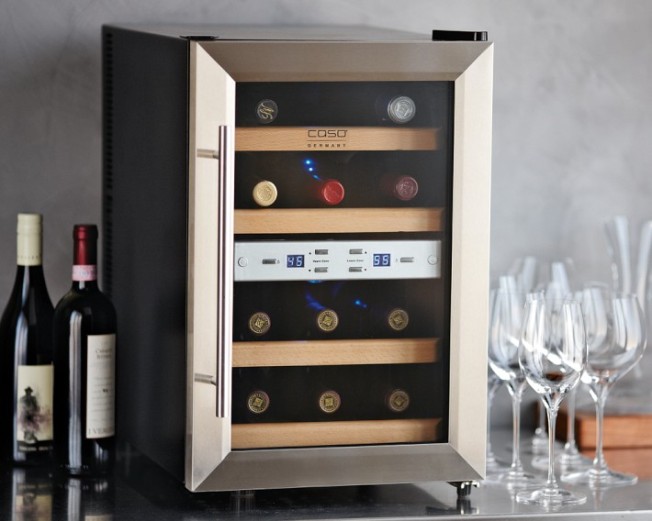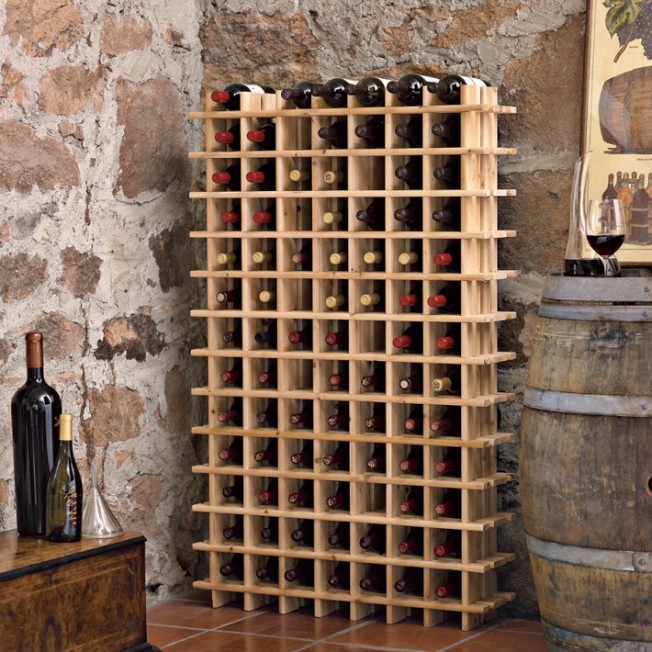Even after it’s bottled, wine remains very much alive — and if properly stored, it can eventually evolve to astounding complexity and mellowness. To enhance your enjoyment of many fine wines, it’s essential to facilitate the aging process, which will improve flavor and bouquet over time. Here are several factors to consider.
Temperature: When storing wine, temperature is key. The optimal temperature is 50° to 55°F—the lower it is, the more slowly a fine vintage will mature. But wine can be safely stored at up to 68°F if the temperature remains constant.
 Position: Always store bottles on their sides to ensure that corks remain in contact with the wine. When bottles are left upright, their corks dry and shrink, allowing oxidation to occur.
Position: Always store bottles on their sides to ensure that corks remain in contact with the wine. When bottles are left upright, their corks dry and shrink, allowing oxidation to occur.
Light: Ultraviolet light will also start the oxidation process, so wine is best kept out of direct sunlight, preferably in a dark place.
Humidity: High humidity won’t necessarily affect wines, but it can damage the labels. Choose a dry place to insure the labels will remain intact.
Vibrations: To prevent disturbing the sediment of a wine, always store bottles away from vibrations caused by heavy traffic or powerful appliances.
Find more tips for choosing, pairing, tasting and serving wine in our Guide to Wine.


1 comment
where can we find this first wine rack in article? same one we purchases about 10 years ago and cant find any ideas? thanks